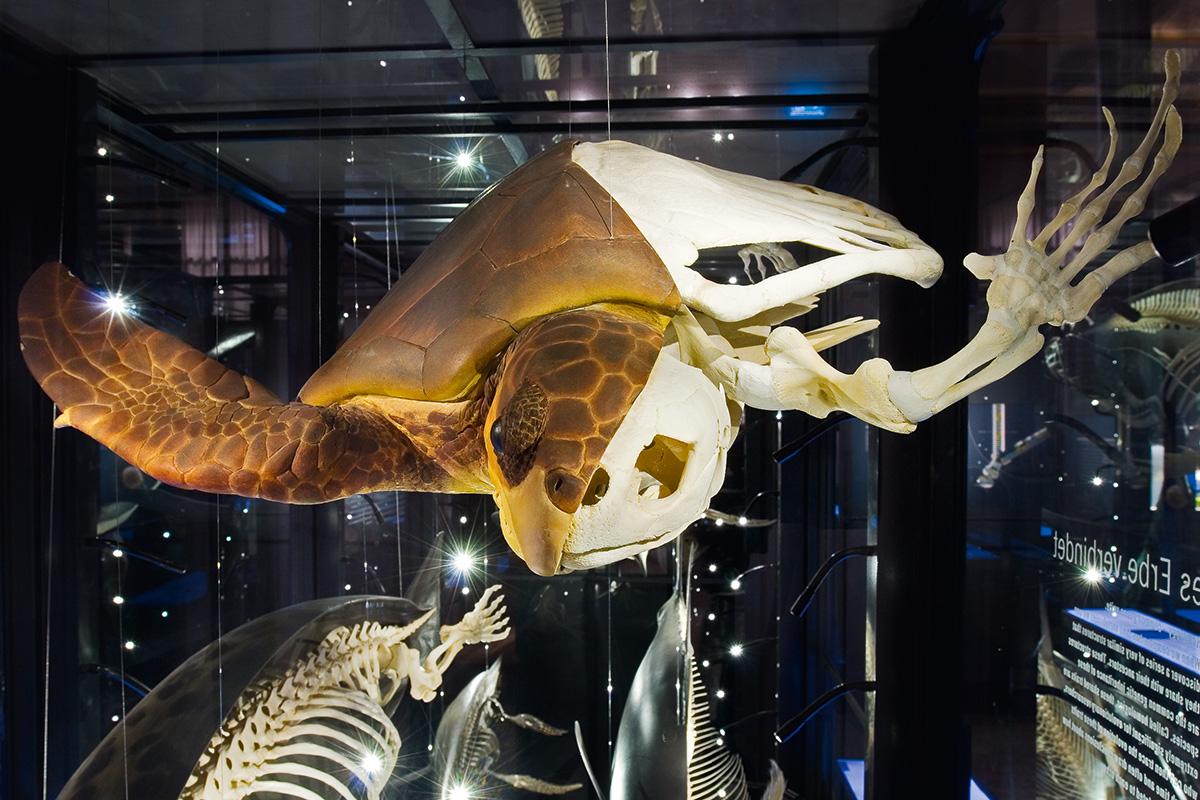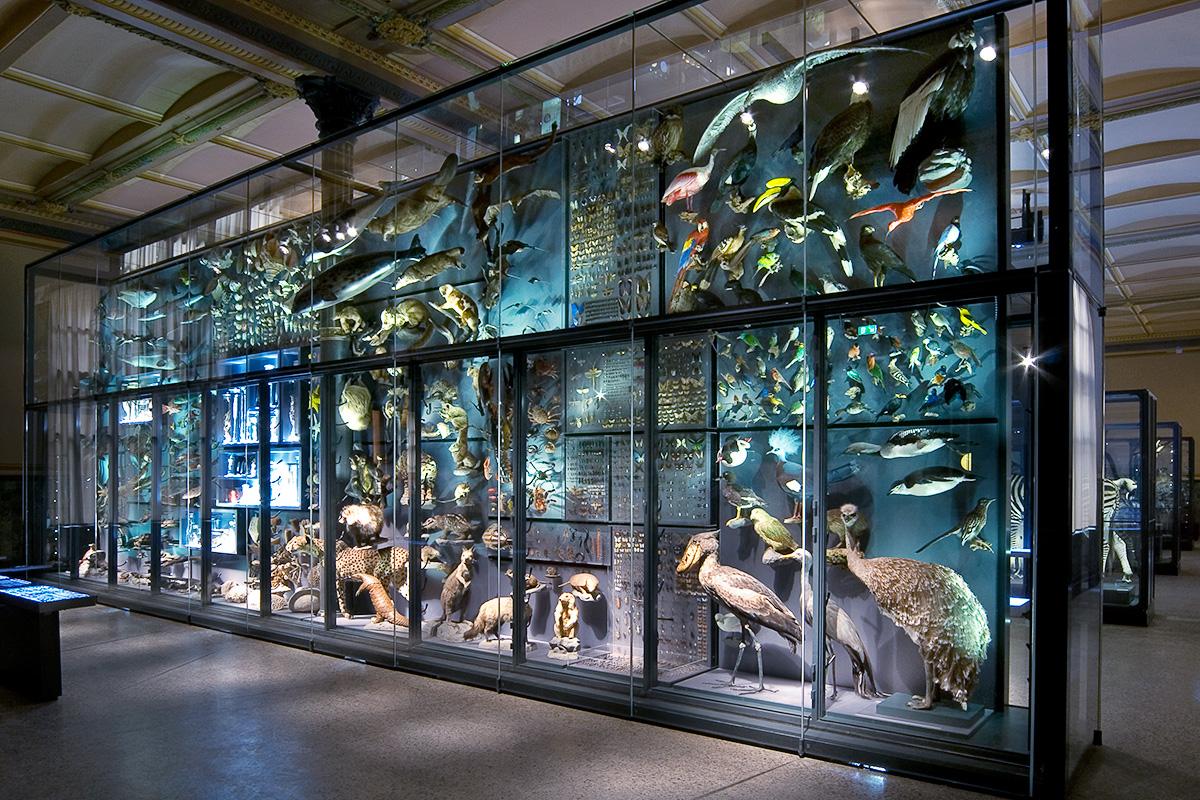It is estimated that on the Earth, there are between 4 and 40 million plant and animal species. This overwhelming variety came about through evolution in the course of geological history. Over time, many organisms vanished, leaving nothing but fossil traces. Such traces increased continuously, and some of them have been preserved to this day. However, many species have not yet been discovered, while others are threatened with extinction. The idea of a common origin of all life goes back to Charles Darwin. Many scientists developed this theory – and then just as today, researchers at the Museum für Naturkunde took part in the debate.
How do new species evolve? And how do mutation and selection work? The exhibition Evolution in Action shows selected evolutionary mechanisms that explain phenotype and behaviour of plants and animals. Such examples include conundrums: why peacocks have such beautiful feathers, but are barely able to fly with them, or why zebras have stripes.
At the entrance of the exhibition is an installation that is four metres high and twelve metres wide – the biodiversity wall where 3,000 animals from a wide range of habitats are displayed.
The Biodiversity Wall

The rich colours and variation in shapes and species make the biodiversity wall a highlight of the Museum’s exhibitions. Approximately 3,000 mounted animals are displayed there. The number of currently existing species is, of course, much higher and estimated to lie between 4 and 40 million. About 1.8 million animal and plant species have so far been scientifically described, recorded and named. New species are constantly being discovered and documented. For each new species, a reference specimen must be deposited in a scientific collection so that researchers all over the world can look it up. The Museum für Naturkunde stores tens of thousands such reference specimens, known as type specimens, in its collections.
Cepaea

Although they are all members of the same species, Cepaea (Polymita picta, garden snails) differ largely from each other in pattern and colouring. Such diversity is genetic and indispensible for the functioning of evolution, as depending on changing environmental conditions, successful variants may change over time. Selection gives the carrier of the new trait an advantage – it usually increases its chances of survival. In Cepaea, the striking patterns probably provide protection from predators through camouflage.
Zebra

The plains zebra (Equus quagga) is a member of the horse family. Of all wild horses, this is the most common extant species. Its striking coat pattern keeps fascinating researchers, and various theories have been vented as to how it came about. Some scientists think that it helps the development of coherence within a herd, while others suggest that the pattern has a cooling effect in the hot savanna. The most widely accepted hypothesis looks at the stripes as camouflage, with individual shapes melting into an indiscernible mass. Recent studies suggest that the threat that helped the stripe pattern to evolve did not come from large predators such as lions, but mainly from carriers of diseases, such as tsetse flies, which carry the sleeping sickness.
Harbour Seal, Sea Turtle and Penguin

In the course of geological history, some vertebrates conquered the oceans. Their extremities evolved into flippers. These have a similar shape, but the skeletal structure points to different origins, as the cut-away models of a harbour seal, a sea turtle and a penguin demonstrate.
In a sea turtle, the flipper is a reptile leg with scales that has adapted to a marine lifestyle, whereas in a seal, it is the furry running leg of a mammal and in a penguin, a feathered bird’s wing. They all adapted to their watery habitat by turning into flippers. Such a parallel emergence of similar characteristics in diverse, non-related species is called convergent evolution.
Quagga

The Quagga, Equus quagga quagga, is an extinct variety of the Plains zebra Equus quagga. They were fairly common in Southern Africa where they were extensively hunted by farmers in the 17th century, as they were seen as competing with cattle for food. They also made popular trophies. Two hundred years later, the quagga was extinct. Only about 24 taxidermies survive worldwide. Therefore the quagga is one of the museum's most valuable objects.
Tasmanian Tiger

Like kangaroos, wombats and koalas, the Tasmanian tiger (Thylacinus cynocephalus) is a marsupial. It used to inhabit the Australian continent and was also known as Tasmanian wolf. Today, all that is left are descriptions, old photos and film reels and a few mounted animals in natural history collections. Through competition with dogs (dingos) introduced by humans, the Tasmanian tiger went extinct about 80 years ago. The animal shown here lived in the Berlin Zoo until 1904 and became property of the Museum für Naturkunde after its death.
